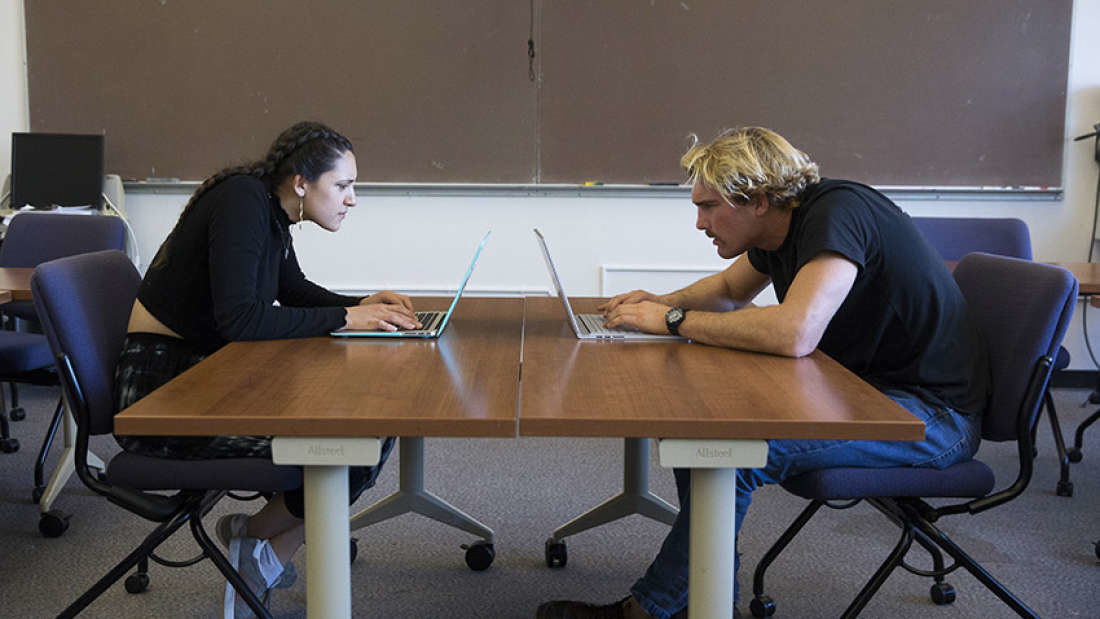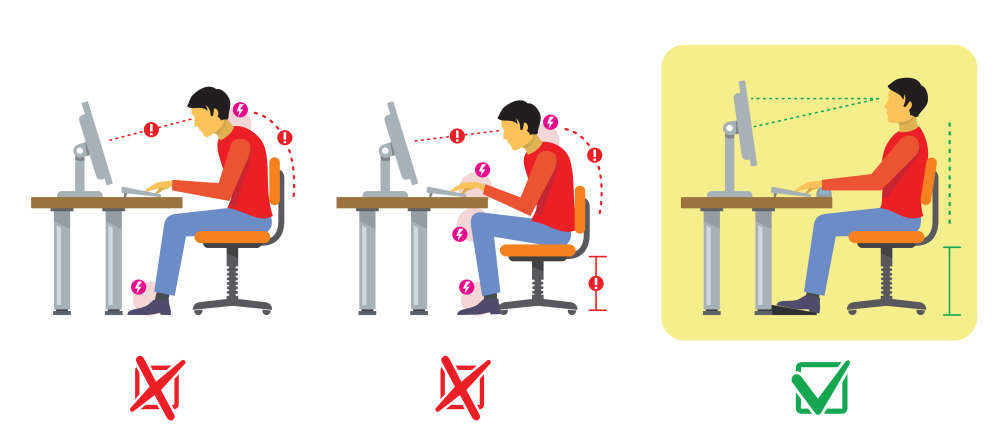
Writing in the journal Biofeedback, a team of medical professionals say that this seemingly harmless posture could be compressing your neck, leading to fatigue, headaches, poor concentration, increased muscle tension, and even injury to your spine over time and limiting your ability to turn your head.
This is your cue to sit up straight.
"When your posture is tall and erect, the muscles of your back can easily support the weight of your head and neck - as much as 12 pounds," explained Professor of Holistic Health Erik Peper in a statement. "But when your head juts forward at a 45-degree angle, your neck acts like a fulcrum, like a long lever lifting a heavy object. Now the muscle weight of your head and neck is the equivalent of about 45 pounds. It is not surprising people get stiff necks and shoulder and back pain."
To see how the position of a person's head and neck affects their health, the researchers compared the neck mobility of dozens of students both when they were sitting with proper posture (head aligned on their neck) and then again "scrunching" their neck with their heads jutting forward. Nine-two percent of participants reported being able to turn their head farther when not scrunching. Researchers then asked more than 100 students to scrunch their neck for 30 seconds and report how they felt afterward; almost all reported some sort of pain in their head, neck, or eyes. Through a nerve and muscle test on 12 of the students, known as electromyography, the researchers determined that the trapezius muscle exhibits more tension when a person is scrunching forward toward their computer.

Just because you don't work in an office doesn't get you off the hook, either. According to the study, digital devices of any size can take a similar toll. If you're one of the nearly 70 percent of computer workers that suffer from head, neck, or backaches from working at a computer all day, then the team advise you to get your head on straight - literally. Check your posture and make sure your head is positioned above the top of your neck as if it is held up by an invisible string extending from the crown of your head to the ceiling.
"You can do something about this poor posture very quickly," said Peper, continuing that those in pain can become aware of their posture by mimicking the scrunchy pose. "You can exaggerate the position and experience the symptoms. Then when you find yourself doing it, you can become aware and stop."
You can also increase the font on your screen, wear reading glasses, or put your computer on a stand at eye level so that you're not squinting forward.
New year, new posture.



Comment: See also: